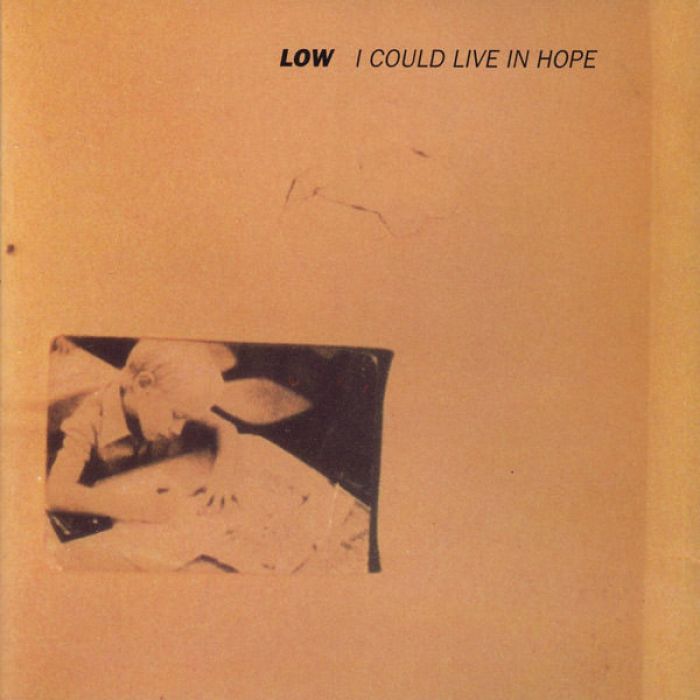10 Defining Albums, #4: I Could Live in Hope by Low (Review)

In keeping with a recent Facebook meme, these are 10 albums, listed by artist in alphabetical order, that had a huge impact on me, changed the way I experienced music, expanded my horizons, and maybe even saved me. They’re not necessarily the best albums or even my favorite albums by the respective artists, though there’s some overlap. But without them, I wouldn’t be who I am today.
“Slowcore” is one of those genre names that everybody seems to disparage, and yet, they keep using it all the same. Which is probably much to Low’s frustration, because the Minnesota band is arguably the band most often referenced when “slowcore” comes up in conversation, and with their 1994 debut album I Could Live in Hope, they created the prototypical slowcore album.
As you might’ve guessed by now, Low plays a form of indie-rock that is slower than slow, with glacial rhythms and delicately picked guitars that take a seeming eternity to unfold. There’s just as much emphasis on the space that occurs between the notes as on the notes themselves, and Low makes great use of said space. The result is music that is contemplative and hypnotic, spooky and sublime. And when I first heard Low back around 1996 or 1997, I was completely spellbound by their stripped down, sparser-than-sparse sound.
I can see some complain about Low’s music being too slow, too simple, too boring, but I’ve never found this album to be any of those things. Low certainly requires you to match their pace, to sit down inside their songs. Up until then, I’d never heard pop music so demanding — demanding, but also rewarding. Because there are so few of them (relatively speaking), each note and element — be it a melodic line, a guitar strum, a bass note, or the brush of a cymbal — feels absolutely essential. Nothing is wasted, and as a result, everything becomes so much more important and affecting.
And I would be greatly remiss if I didn’t mention Low’s greatest asset, the vocal harmonies of Alan Sparhawk and Mimi Parker, which strike an amazing balance between worshipful and world-weary, and are never anything other than lovely.
One of the greatest concerts I’ve ever been to was Low performing at Omaha’s now defunct Cog Factory sometime around 1998. It was the middle of winter, and there were barely 20 people in the venue, most of whom were there to see the opening band. The Cog Factory was as sketchy as they came, a literal hole in the wall that was an icebox on that winter night. But that night, the stark, empty venue, not to mention the frigid weather outside, turned out to be the perfect backdrop for Low’s music.